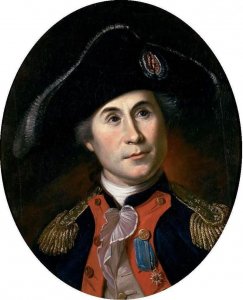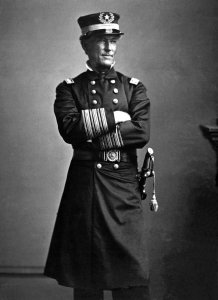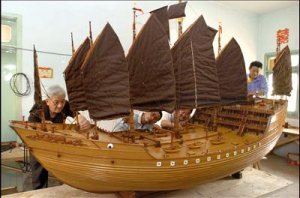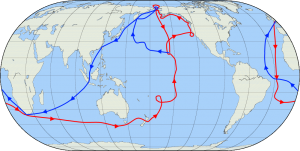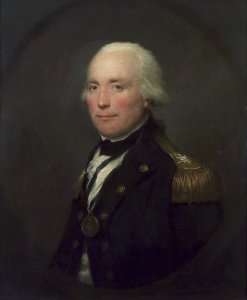Today in Naval History - Naval / Maritime Events in History
30th of June
some of the events you will find here,
please use the following link where you will find more details and all other events of this day .....
1667 - The Battle of Martinique also known as Harman’s Martinican Bonfire
was a major naval battle fought in the Caribbean island of Martinique at St Pierre, from 30 June to 7 July 1667 that came towards the end of the Second Anglo-Dutch War. A French merchantile fleet anchored in the bay led by Joseph de La Barre were attacked by an English fleet led by Admiral Sir John Harman. The English were victorious, virtually wiping out the French fleet in the Caribbean, which contained no naval vessels,[clarification needed] and enabled them to secure their domination and position in the West Indies despite being at the war's end.

The attack on the French ships at Martinique 1667 by Willem van de Velde the Younger
1779 - Launch of 74-gun ship HMS Edgar
HMS Edgar was a 74-gun third-rate ship of the line of the Royal Navy, that saw service in the American Revolutionary, French Revolutionary and Napoleonic Wars. Launched in 1779, she fought in the battles of Cape St Vincent (in 1780) and Copenhagen (in 1801), two of the major naval engagements of the wars.
Edgar also saw service as flagship to two different admirals, and was the scene of a mutiny in 1808. After the end of her active career, she was employed as a prison ship before her 56-year life came to an end in 1835, when she was ordered to be broken up.
Edgar was ordered from Woolwich Dockyard on 25 August 1774. She was built to slightly modified lines of the Arrogant-class, which had been designed by Sir Thomas Slade. The Arrogant class of third rates was a development over Slade's previous Bellona-class, and a further nine ships were ordered from various yards, both Royal and commercial, to the same lines as Edgar. Originally, the Admiralty had intended to order her to be built to the lines of Sir John Williams' Alfred-class, specifically HMS Alexander. Her keel was laid down on 26 August 1776, and she was launched on 30 June 1779.
A list composed in or around 1793, giving details of twelve Royal Navy ships, reveals that Edgar possessed a white figurehead, with details painted in red and black. Of the other eleven ships mentioned, seven had the plain white figureheads as completed by the dockyards, whilst four had painted theirs with a larger palette since being launched.

1898 - The First Battle of Manzanillo
was a series of naval engagements during the Spanish–American War on 30 June 1898 in and outside of the harbor of Manzanillo, Cuba. Three American gunboats were forced to retire after attacking a squadron of Spanish gunboats and auxiliaries.

USS Hornet 1898
1934 - Launch of german Cruiser Admiral Graf Spee
Admiral Graf Spee was a Deutschland-class "Panzerschiff" (armored ship), nicknamed a "pocket battleship" by the British, which served with the Kriegsmarine of Nazi Germany during World War II. The two sister-ships of her class, Deutschland and Admiral Scheer, were reclassified as heavy cruisers in 1940. The vessel was named after Admiral Maximilian von Spee, commander of the East Asia Squadron that fought the battles of Coronel and the Falkland Islands, where he was killed in action, in World War I. She was laid down at the Reichsmarinewerft shipyard in Wilhelmshaven in October 1932 and completed by January 1936. The ship was nominally under the 10,000 long tons (10,000 t) limitation on warship size imposed by the Treaty of Versailles, though with a full load displacement of 16,020 long tons (16,280 t), she significantly exceeded it. Armed with six 28 cm (11 in) guns in two triple gun turrets, Admiral Graf Spee and her sisters were designed to outgun any cruiser fast enough to catch them. Their top speed of 28 knots (52 km/h; 32 mph) left only the few battlecruisers in the Anglo-French navies fast enough and powerful enough to sink them.
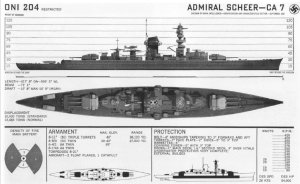
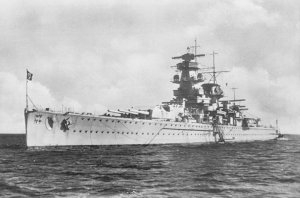
The ship conducted five non-intervention patrols during the Spanish Civil War in 1936–1938, and participated in the Coronation Review of King George VIin May 1937. Admiral Graf Spee was deployed to the South Atlantic in the weeks before the outbreak of World War II, to be positioned in merchant sea lanes once war was declared. Between September and December 1939, the ship sank nine ships totaling 50,089 gross register tons (GRT), before being confronted by three British cruisers at the Battle of the River Plate on 13 December. Admiral Graf Spee inflicted heavy damage on the British ships, but she too was damaged, and was forced to put into port at Montevideo. Convinced by false reports of superior British naval forces approaching his ship, Hans Langsdorff, the commander of the ship, ordered the vessel to be scuttled. The ship was partially broken up in situ, though part of the ship remains visible above the surface of the water.

Admiral Graf Spee at Spithead in 1937; HMS Hood and Resolution lie in the background
30th of June
some of the events you will find here,
please use the following link where you will find more details and all other events of this day .....
Naval/Maritime History - 27th of August - Today in Naval History - Naval / Maritime Events in History
29 June 1813 - HMS Terrror launched in Topsham, Devon. HMS Terror was a specialized warship and a newly developed bomb vessel constructed for the Royal Navy in 1813. She participated in several battles of the War of 1812, including the Battle of Baltimore with the bombardment of Fort McHenry...
shipsofscale.com
1667 - The Battle of Martinique also known as Harman’s Martinican Bonfire
was a major naval battle fought in the Caribbean island of Martinique at St Pierre, from 30 June to 7 July 1667 that came towards the end of the Second Anglo-Dutch War. A French merchantile fleet anchored in the bay led by Joseph de La Barre were attacked by an English fleet led by Admiral Sir John Harman. The English were victorious, virtually wiping out the French fleet in the Caribbean, which contained no naval vessels,[clarification needed] and enabled them to secure their domination and position in the West Indies despite being at the war's end.
The attack on the French ships at Martinique 1667 by Willem van de Velde the Younger
1779 - Launch of 74-gun ship HMS Edgar
HMS Edgar was a 74-gun third-rate ship of the line of the Royal Navy, that saw service in the American Revolutionary, French Revolutionary and Napoleonic Wars. Launched in 1779, she fought in the battles of Cape St Vincent (in 1780) and Copenhagen (in 1801), two of the major naval engagements of the wars.
Edgar also saw service as flagship to two different admirals, and was the scene of a mutiny in 1808. After the end of her active career, she was employed as a prison ship before her 56-year life came to an end in 1835, when she was ordered to be broken up.
Edgar was ordered from Woolwich Dockyard on 25 August 1774. She was built to slightly modified lines of the Arrogant-class, which had been designed by Sir Thomas Slade. The Arrogant class of third rates was a development over Slade's previous Bellona-class, and a further nine ships were ordered from various yards, both Royal and commercial, to the same lines as Edgar. Originally, the Admiralty had intended to order her to be built to the lines of Sir John Williams' Alfred-class, specifically HMS Alexander. Her keel was laid down on 26 August 1776, and she was launched on 30 June 1779.
A list composed in or around 1793, giving details of twelve Royal Navy ships, reveals that Edgar possessed a white figurehead, with details painted in red and black. Of the other eleven ships mentioned, seven had the plain white figureheads as completed by the dockyards, whilst four had painted theirs with a larger palette since being launched.
1898 - The First Battle of Manzanillo
was a series of naval engagements during the Spanish–American War on 30 June 1898 in and outside of the harbor of Manzanillo, Cuba. Three American gunboats were forced to retire after attacking a squadron of Spanish gunboats and auxiliaries.
USS Hornet 1898
1934 - Launch of german Cruiser Admiral Graf Spee
Admiral Graf Spee was a Deutschland-class "Panzerschiff" (armored ship), nicknamed a "pocket battleship" by the British, which served with the Kriegsmarine of Nazi Germany during World War II. The two sister-ships of her class, Deutschland and Admiral Scheer, were reclassified as heavy cruisers in 1940. The vessel was named after Admiral Maximilian von Spee, commander of the East Asia Squadron that fought the battles of Coronel and the Falkland Islands, where he was killed in action, in World War I. She was laid down at the Reichsmarinewerft shipyard in Wilhelmshaven in October 1932 and completed by January 1936. The ship was nominally under the 10,000 long tons (10,000 t) limitation on warship size imposed by the Treaty of Versailles, though with a full load displacement of 16,020 long tons (16,280 t), she significantly exceeded it. Armed with six 28 cm (11 in) guns in two triple gun turrets, Admiral Graf Spee and her sisters were designed to outgun any cruiser fast enough to catch them. Their top speed of 28 knots (52 km/h; 32 mph) left only the few battlecruisers in the Anglo-French navies fast enough and powerful enough to sink them.


The ship conducted five non-intervention patrols during the Spanish Civil War in 1936–1938, and participated in the Coronation Review of King George VIin May 1937. Admiral Graf Spee was deployed to the South Atlantic in the weeks before the outbreak of World War II, to be positioned in merchant sea lanes once war was declared. Between September and December 1939, the ship sank nine ships totaling 50,089 gross register tons (GRT), before being confronted by three British cruisers at the Battle of the River Plate on 13 December. Admiral Graf Spee inflicted heavy damage on the British ships, but she too was damaged, and was forced to put into port at Montevideo. Convinced by false reports of superior British naval forces approaching his ship, Hans Langsdorff, the commander of the ship, ordered the vessel to be scuttled. The ship was partially broken up in situ, though part of the ship remains visible above the surface of the water.
Admiral Graf Spee at Spithead in 1937; HMS Hood and Resolution lie in the background




